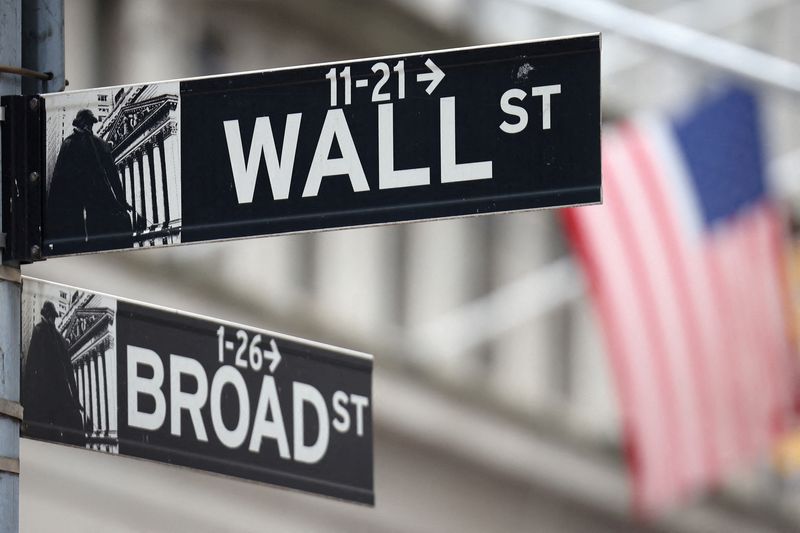By Johann M Cherian and Pranav Kashyap
(Reuters) -Wall Street's main stock indexes hit their lowest point in over a week on Monday, as thin trading volumes and elevated Treasury yields overshadowed the typically robust year-end period for equities.
At 11:45 a.m. ET, the Dow Jones Industrial Average fell 350.71 points, or 0.82%, to 42,641.50, the S&P 500 lost 52.08 points, or 0.87%, to 5,918.76 and the Nasdaq Composite lost 195.71 points, or 0.99%, to 19,526.32.
All 11 S&P 500 sectors were in the red, with consumer discretionary leading declines.
Growth stocks such as Tesla (NASDAQ:TSLA) and Amazon.com (NASDAQ:AMZN) dropped 2.2% and 1.3%, respectively. Chip company Broadcom (NASDAQ:AVGO) lost 2.6%, sending the semiconductor index more than 1.9% lower.
The weakness was atypical as equities tend to do well in the last five trading days of December and into the first two days of January, a phenomenon dubbed the Santa Claus rally. The S&P 500 has gained 1.3% on average during the period since 1969, according to the Stock Trader's Almanac.
The index has been trading in a bull market for over two years and is poised to end its second consecutive year with gains of more than 20%.
However, a rise in Treasury yields since early December has pressured the S&P 500 and the Dow, setting the indexes on track for their roughest month since April.
The yield on the benchmark 10-year note dipped on the day to around 4.5%, but was still near its highest level since May 2024.
Some analysts expect President-elect Donald Trump's policies to be inflationary and markets have toned down their rate-cut expectations for 2025 after the Federal Reserve struck a cautious tone at its recent meeting. Traders now expect the first reduction in May next year, according to the CME Group's (NASDAQ:CME) FedWatch Tool.
"Investors are looking forward to two big things (next year): whether Trump's policies are going to be pro-growth or not, and if the Fed is going to continue injecting easy money into the system," said Adam Sarhan, chief executive of 50 Park Investments in New York.
"Since the last Fed meeting, the market has been down a lot because of the concern that the Fed can be more hawkish and less dovish."
Later in the week, investors will scrutinize the ISM manufacturing activity survey for December and a weekly report on jobless claims, ahead of a key employment report due in the following week.
Boeing (NYSE:BA) dropped 2%. South Korea ordered an emergency safety inspection of its entire airline operation system after the country's worst air disaster over the weekend involving a Boeing plane.
Crypto stocks such as MicroStrategy lost 6.9%, Coinbase (NASDAQ:COIN) dropped 5.2% and MARA Holdings dropped 6.2%, tracking a 2.8% slide in bitcoin prices.
Trading is expected to be impacted by thin volumes in the run up to the New Year holiday on Wednesday and is likely to remain subdued until Jan. 6.
U.S. stock markets, including the NYSE, Nasdaq, and CBOE, will be closed on Thursday, Jan. 9, for a national day of mourning for former President Jimmy Carter.

Declining issues outnumbered advancers by a 2.28-to-1 ratio on the NYSE and by a 2.34-to-1 ratio on the Nasdaq.
The S&P 500 posted no new 52-week highs and 15 new lows while the Nasdaq Composite recorded 43 new highs and 94 new lows.